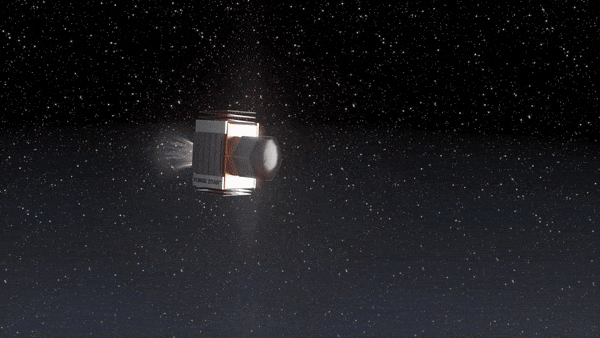ESA is preparing to test a very cool new fold-out heat shield for protecting spacecraft on re-entry. The Pridwen won't burn away like ablative heat shields, and it'll also slow falling satellites down enough to be caught in a hover net.
Pridwen, named for King Arthur's shield, is designed to be super-compact, folding down using a "modified origami technique" to fit inside the launcher until it's needed as the craft is coming back down to Earth.
At that point, it pops out and unfurls, looking like an upside-down umbrella, presenting a ton more surface area to the air than the ablative heat shielding currently used on the exterior of many re-entry craft. This allows it to radiate the heat away, rather than needing to break up and burn off. The craft is then caught in a water-based hover net dubbed Fielder, an uncrewed vessel that "maneuvers itself underneath a re-entry vehicle to soften the landing and enable quick return to a port."

It's been tested from heights up to 17 km (56,000 ft), and its creator, Welsh company Space Forge, has used it to successfully capture test items in a net that were falling at terminal velocity. So it'll soon get its first chance to bring something down from space, with the company's first launch, ForgeStar-1A, later this year.
"Supermaterials made in space will be able to save industries on Earth enormous amounts of energy, limiting their CO2 emissions in a way their terrestrial counterparts can never match," said co-founder and CTO of Space Forge, Andrew Bacon. "Pridwen and Fielder are key parts of our plan to develop fully reusable manufacturing satellites that can kick start a new industrial revolution."
This tech could eventually help make small spacecraft re-usable at the end of their missions – but Space Forge has another goal in mind. Its ultimate plan is to set up a space-based manufacturing service, taking advantage of low gravity, low contamination, extreme temperatures and the natural vacuum of space to produce high-value goods like pharmaceuticals, superconductors and superalloys. In that context, Pridwen would shield the goods on their way back down to Earth.
The video below has more.
Source: ESA





